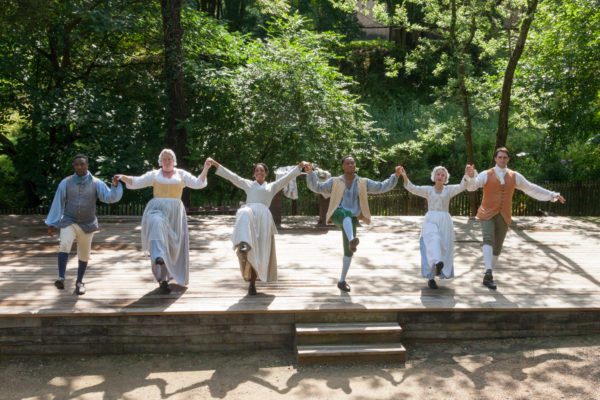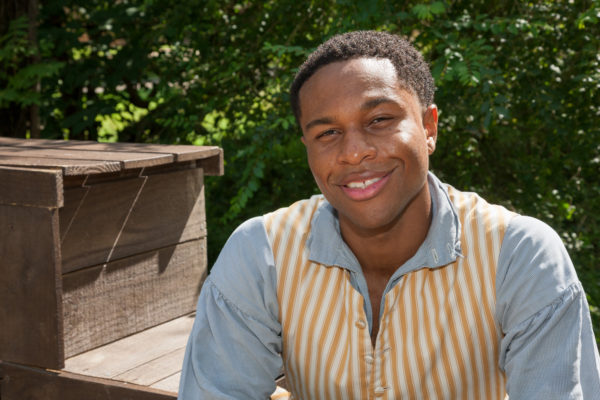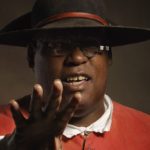
We tell a lot of very important stories, and I’m not just talking about those of Thomas Jefferson and George Washington. The stories of slavery cover the entirety of the Historic Area and a new program developed by a group of Actor-Interpreters hopes to promote healing and understanding.
The black population in 18th-century Williamsburg was more than half of the entire population of the city and was comprised of both enslaved and free people. Over the years, we’ve striven to tell these stories. A new program that debuted in the spring, Journey to Redemption, takes you on an emotional expedition to understand what it’s like to portray an enslaved person or a slave owner here in the Revolutionary City. I’ve heard several stories about the things said to some of our interpreters. Yes, they are playing specific roles, but they are still people.
I met with the cast and crew—Assistant Director Mary Carter; Antoinette Brennan, who portrays Ann Wager, a teacher of enslaved children; Dave Catanese, who portrays Joseph Prentis, a slave owner; Corinne E. Dame, who portrays Elizabeth Wythe, a slave owner; Jamar Jones, who portrays Mingo as well as Roger, enslaved men; Katrinah Lewis, who portrays Lydia Broadnax as well as Jenny, enslaved women; and Jeremy Morris, who portrays Jack Booker, an enslaved man—to pick their brains about why Journey to Redemption is so very important.
“It’s our attempt to redeem society from the evil effects of slavery,” Antoinette said. Katrinah added, “The purpose of the piece is to help heal some of the historical trauma that exists in our Nation’s collective conscience and the consciousness of this particular place, this particular ground that we’re standing on.”
The entire cast wanted to be part of this program when the idea was first floated around. Mary explained the need for a balanced cast to be able to show all sides and in January, they began working together to sculpt the piece. It took about two and a half months to get it just right. The program is a mix of music, dance, and reflection; in character and out of character. The cast is portraying not only characters, but themselves.
“It is a devised theater piece,” Jamar explained. “We all had a hand in shaping and creating it. So it’s the stories of some of the characters that we portray and interpret throughout the city, and it’s also a reflection of some of our experiences as performers working here over time. We’ve all been here for varying numbers of years and we’ve all had very different experiences and we hope to showcase that with the challenges there also comes a great deal of beauty with this job and line of work.”
Beautiful is simply not enough to describe this piece. I went to see it in June and was absolutely blown away. When I first began working for Colonial Williamsburg two years ago, some of my very first friends I made were members of the Actor-Interpreter department. The entire department is comprised of some of the most talented and intelligent people I have ever had the pleasure of knowing and it shines through in this program. The raw emotion is real, and you’ll feel it, too.
The audience is able to participate with a group discussion following the performance. “After the piece, we give them the opportunity to share how this piece landed with them and how it affects them,” Corinne told me.
When I saw the program, my group spoke with Corinne and Jeremy about their feelings. A guest admitted he felt shame as a white man. At first others were hesitant to open up, but we all soon felt comfortable and entered a safe space to truly say how we felt.
What do they hope the audience takes away from that? One goal is to open hearts and open minds. Another is to “take some responsibility for our current state of affairs,” as Katrinah stated.
“Hopefully they can learn from the history,” Jamar said. “They can see how it affects our lives today, how it affects race relations, how it influences the way people treat one another and hopefully it can urge them to go back into their communities with new perspectives, and begin to embrace others who are different from them, and really strive to make positive change in life and hopefully it will affect the greater good.“
“And that guests understand that it takes strength to do this job,” Corinne added.
Journey to Redemption can be seen every Tuesday and Thursday at 2 p.m. through the rest of the summer. The program will continue into the fall, so stay tuned for more information on whether the days and time remain the same.
A very special thank you to Lael White for all of the beautiful photos.




I study the Civil War extensively. I have done ‘living history’, not to be confused with re enacting. My study and interest in that era is quite a bit about slavery. Still, I’m not sure how to feel about it. I certainly do not condone or excuse slavery . While I realize the wrong of it all, I do not feel a connection to it. I think that is due to the fact that I am only second generation Italian. My paternal grand parents were so poor that they tell of brushing any dirt they found on the way home from school into their aprons only to deposit it into their mother’s garden! Is that where we get the tern “dirt poor”? I don’t know. My maternal grand parents were most likely illiterate is both Italian and English. Neither set ever wanted to go back to Italy to see their siblings or parents. So while they were not slaves, they had a very hard life in poverty. We had no part in American slavery. It’s like being on the other side of a building looking in through a window.. To me it’s history. Not to be forgotten or repeated. There is no discomfort to me personally because it never had anything to do with my family.